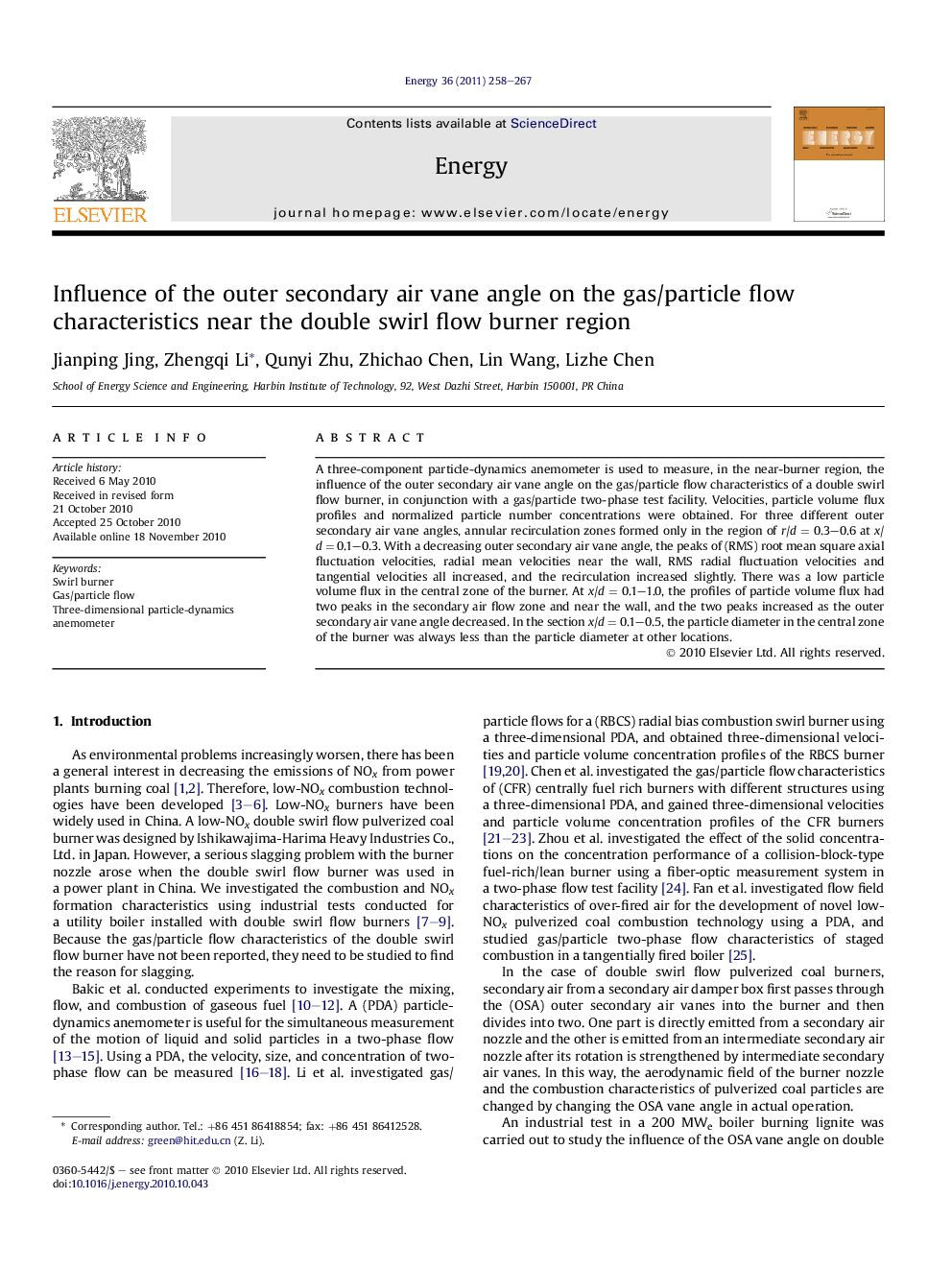| Article ID | Journal | Published Year | Pages | File Type |
|---|---|---|---|---|
| 1734760 | Energy | 2011 | 10 Pages |
A three-component particle-dynamics anemometer is used to measure, in the near-burner region, the influence of the outer secondary air vane angle on the gas/particle flow characteristics of a double swirl flow burner, in conjunction with a gas/particle two-phase test facility. Velocities, particle volume flux profiles and normalized particle number concentrations were obtained. For three different outer secondary air vane angles, annular recirculation zones formed only in the region of r/d = 0.3–0.6 at x/d = 0.1–0.3. With a decreasing outer secondary air vane angle, the peaks of (RMS) root mean square axial fluctuation velocities, radial mean velocities near the wall, RMS radial fluctuation velocities and tangential velocities all increased, and the recirculation increased slightly. There was a low particle volume flux in the central zone of the burner. At x/d = 0.1–1.0, the profiles of particle volume flux had two peaks in the secondary air flow zone and near the wall, and the two peaks increased as the outer secondary air vane angle decreased. In the section x/d = 0.1–0.5, the particle diameter in the central zone of the burner was always less than the particle diameter at other locations.
Research highlights► Annular recirculation zones form with three outer secondary air vane angles. ► Particle concentration in the central zone of burner is low. ► Volume flux and relative number density profiles of particles both have two peaks. ► Particle diameter in the central zone of burner is less than those at other locations.
